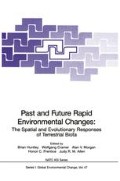Abstract
Except in rare instances where DNA might be extracted from a well-preserved and well-dated fossil series, molecular genetic assays normally are confined to living organisms sampled from the present-day horizon in time. Nevertheless, temporal aspects of evolution can be recovered from extant organisms using genomic differences accumulated since shared ancestry. This temporal, phylogenetic dimension of evolution has traditionally been the province of macroevolutionary studies that deal with relationships among species and higher taxa. Phylogenetic perspectives were rarely applied, or even perceived as relevant, at the intraspecific level because of a lack of empirical approaches to assess historical relationships, and because of a widespread perception that phylogeny had no real meaning for potentially interbreeding assemblages of populations. In the last two decades, studies of mitochondrial (mt) DNA have changed this view dramatically by demonstrating that the matriarchal component of intraspecific phylogeny can be estimated empirically (Avise 1989).
Access this chapter
Tax calculation will be finalised at checkout
Purchases are for personal use only
Preview
Unable to display preview. Download preview PDF.
References
Avise JC (1989) Gene trees and organismal histories:a phylogenetic approach to population biology. Evolution 43:1192–1208
Avise JC (1994) Molecular Markers, Natural History and Evolution. Chapman and Hall, New York
Avise JC (1995) Mitochondrial DNA polymorphism and a connection between genetics and demography of relevance to conservation. Cons Biol 9:686–690
Avise JC (1996) Toward a regional conservation genetics perspective, in Avise JC & Hamrick JL (eds) Conservation Genetics:Case Histories from Nature, 431–470. Chapman and Hall, New York.
Avise JC, Arnold J, Ball RM Jr, Bermingham E, Lamb T, Neigel JE, Reeb CA, Saunders NC (1987) Intraspecific phylogeography:the mitochondrial DNA bridge between population genetics and systematics. Annu Rev Ecol Syst 18:489–522
Avise JC, Ball RM Jr (1990) Principles of genealogical concordance in species concepts and biological taxonomy. Oxford Surv Evol Biol 7:45–67
Ball RM Jr, Neigel JE, Avise JC (1990) Gene genealogies within the organismal pedigrees of random mating populations. Evolution 44:360–370
Hudson RR (1990) Gene genealogies and the coalescent process. Oxford Surv Evol Biol 7:1–44
Neigel JE, Avise JC (1986) Phylogenetic relationships of mitochondrial DNA under various demographic models of speciation. inNevo E & Karlin S (eds) Evolutionary Processes and Theory, 515–534. Academic Press, New York.
Neigel JE, Ball RM Jr, Avise JC (1991) Estimation of single generation migration distances from geographic variation in animal mitochondrial DNA. Evolution 45:423–432
Slatkin M, Barton NH (1989) A comparison of three indirect methods for estimating average levels of gene flow. Evolution 43:1349–1368
Slatkin M, Maddison WP (1989) A cladistic measure of gene flow inferred from the phylogenies of alleles. Genetics 129:555–562
Takahata N (1995) A genetic perspective on the origin and history of humans. Annu Rev Ecol Syst 26:343–372
Templeton AR (1993) The “Eve” hypotheses:A genetic critique and reanalysis. Amer Anthropol 95:51–72
Templeton AR, Georgiadis NJ (1996) A landscape approach to conservation genetics:conserving evolutionary processes in the African bovidae. inAvise JC, Hamrick JL (eds) Conservation Genetics:Case Histories from Nature, 398–430. Chapman and Hall, New York
Templeton AR, Routman E, Phillips CA (1995) Separating population structure from population history:a cladistic analysis of the geographical distribution of mitochondrial DNA haplotypes in the tiger salamander, Ambystoma tigrinum. Genetics 140:767–782
Walker D, Burke VJ, Barák I, Avise JC (1995) A comparison of mtDNA restriction sites vs. control region sequences in phylogeographic assessment of the musk turtle (Sternotherus minor). Molec Ecol 4:365–373
Weir B (1990) Genetic Data Analysis. Sinauer, Sunderland MA
Author information
Authors and Affiliations
Editor information
Editors and Affiliations
Rights and permissions
Copyright information
© 1997 Springer-Verlag Heidelberg
About this paper
Cite this paper
Avise, J.C. (1997). Space and time as axes in intraspecific phylogeography. In: Huntley, B., Cramer, W., Morgan, A.V., Prentice, H.C., Allen, J.R.M. (eds) Past and Future Rapid Environmental Changes. NATO ASI Series, vol 47. Springer, Berlin, Heidelberg. https://doi.org/10.1007/978-3-642-60599-4_29
Download citation
DOI: https://doi.org/10.1007/978-3-642-60599-4_29
Publisher Name: Springer, Berlin, Heidelberg
Print ISBN: 978-3-540-61877-5
Online ISBN: 978-3-642-60599-4
eBook Packages: Springer Book Archive

